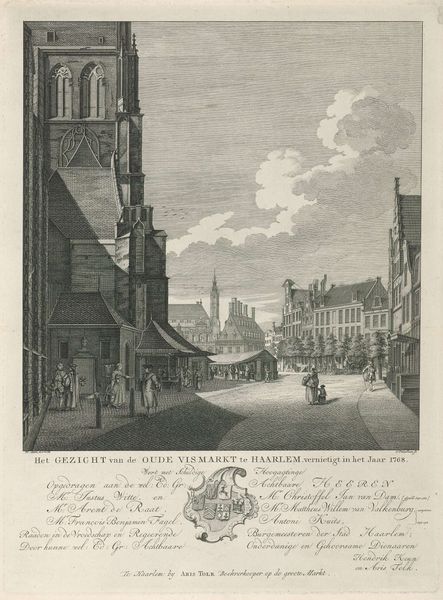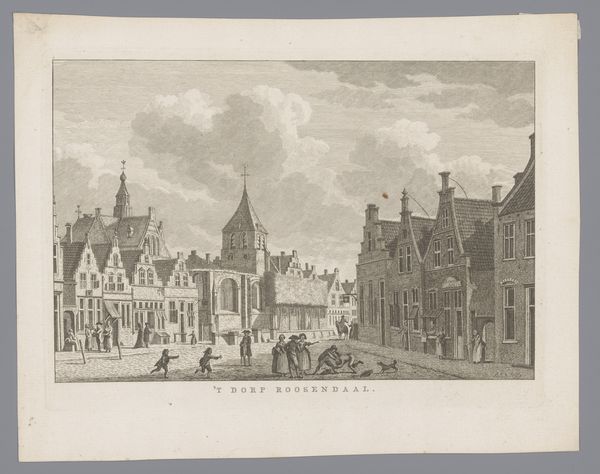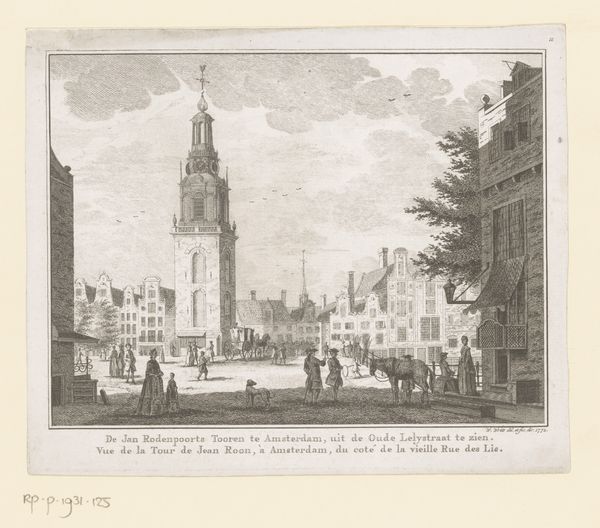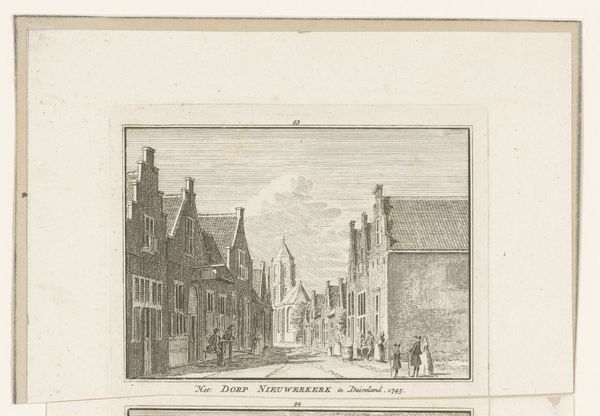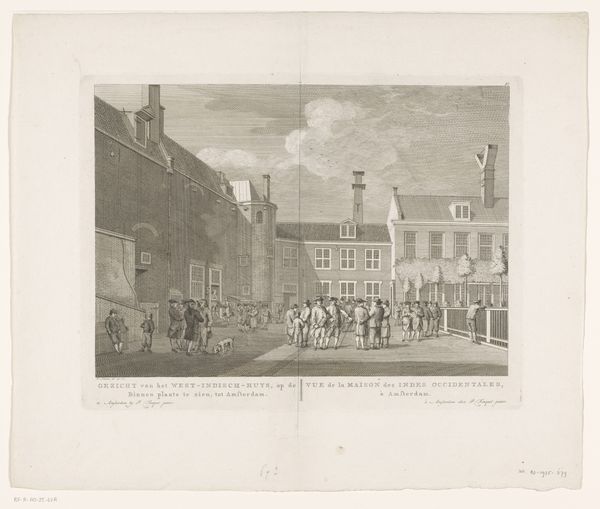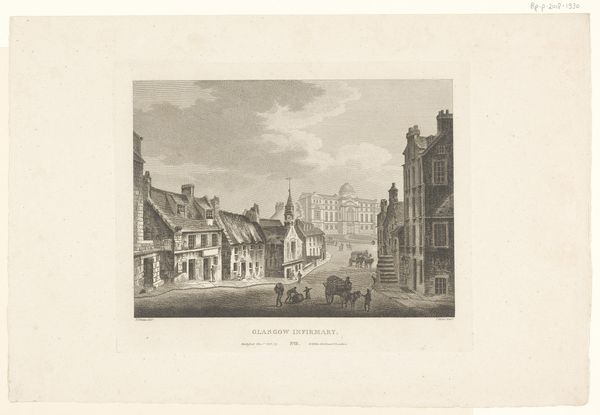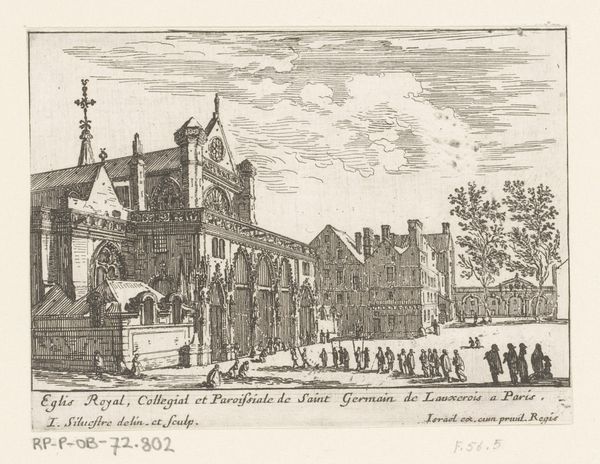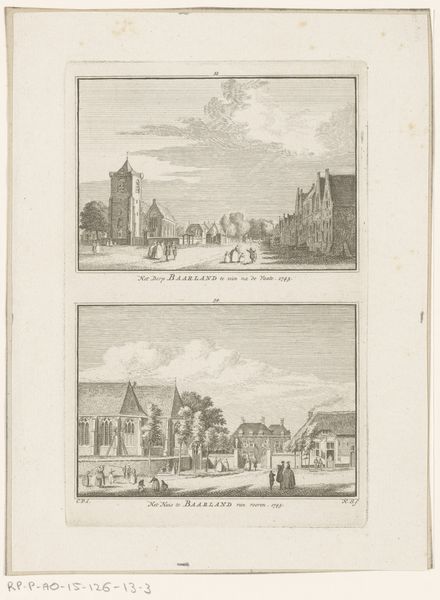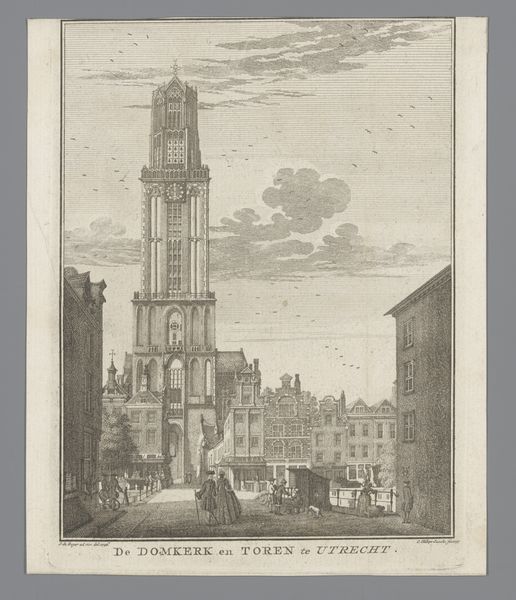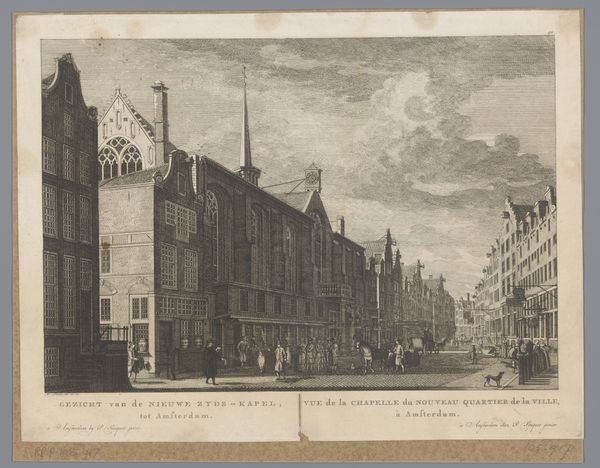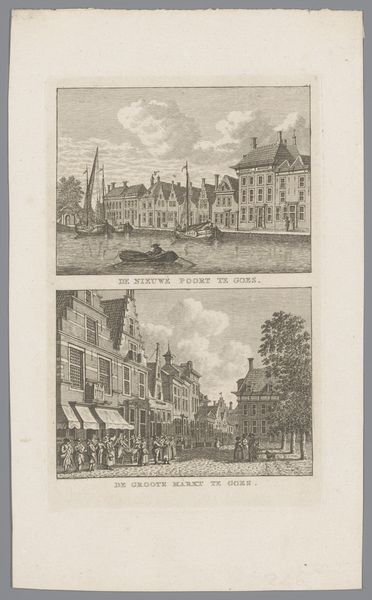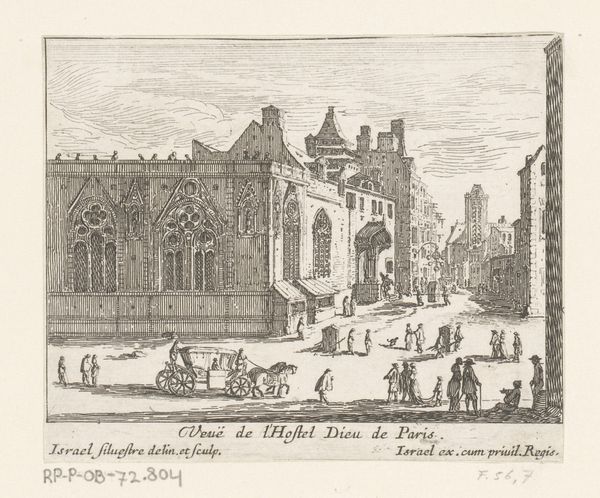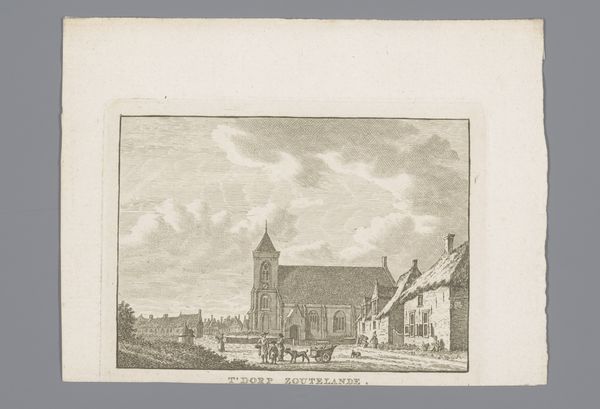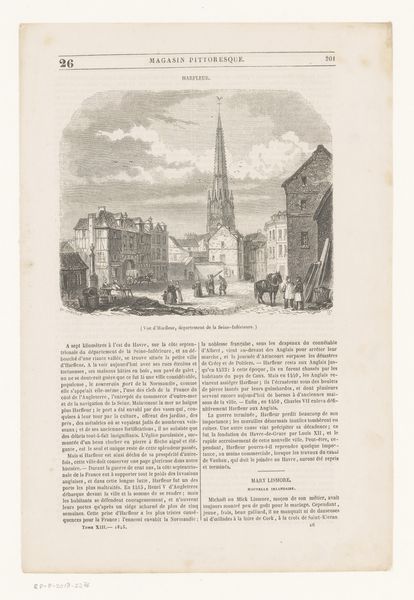
Dimensions: height 424 mm, width 307 mm
Copyright: Rijks Museum: Open Domain
Curator: Caspar Jacobsz. Philips's "View of the New Fish Market in Haarlem, 1769". A seemingly simple cityscape, rendered in engraving. Editor: It feels quite formal and reserved to me, the neat lines and the almost photographic detail of the buildings, it gives off a certain austerity. How do you interpret this work, looking at it from today's world? Curator: Well, let’s look beyond the aesthetic. While it depicts a marketplace, a space for commerce and daily life, who is visible in this representation and what power structures are at play? Consider Haarlem's role in the Dutch Golden Age, built on trade, including the exploitation of colonized peoples. Does this serene cityscape, in its very order and detail, mask the inequalities inherent in that society? Editor: So, you’re suggesting we examine who *isn’t* visible, whose stories are omitted from this idealized picture? The engraving focuses on the architecture, the commerce... almost like celebrating the status quo. Curator: Precisely. The seemingly neutral depiction is a deliberate choice. Art doesn't exist in a vacuum. Can we view this image as a form of visual propaganda, reinforcing a particular narrative about Haarlem's prosperity while conveniently omitting uncomfortable truths? Who had the means to commission or purchase prints like these, and whose interests did they serve? Editor: That’s a perspective I hadn't considered! So it's not just a picture of a marketplace but an artifact of social and political power. What should one keep in mind about historical context when they are viewing a historical piece of art? Curator: Never take appearances at face value, question every narrative, and search for the untold stories behind the surface. Think critically about what is being shown and, more importantly, what is being deliberately concealed. Editor: This engraving offers more to contemplate than I initially thought. The historical context informs my understanding of the work today and makes me think about similar examples of hidden inequalities present in our world too. Curator: Indeed. Art becomes a powerful tool for dialogue when viewed through such lenses.
Comments
No comments
Be the first to comment and join the conversation on the ultimate creative platform.
